Common Fruit Tree Insects Found in Edmonton and How to Prevent Them
Reading time: 6 minutesIt takes a lot of care and commitment to grow fruit trees in your yard. Unfortunately, the fruits of your labour can sometimes face uninvited guests, turning your dream orchard into something not-so-pleasant.
In this article, we'll peel back the layers of common fruit tree insects in Edmonton and share tips to keep your trees pest-free.
Common Fruit Tree Insects Found in Edmonton
1. Apple Curculios
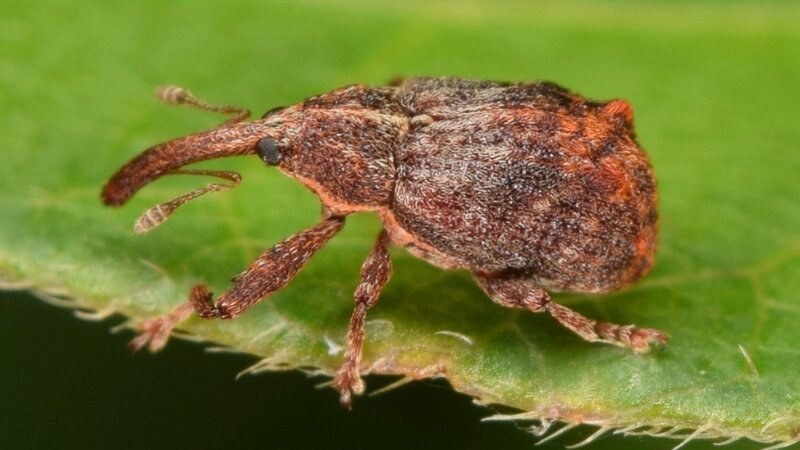
Apple Curculios are little guys with a big appetite, especially if you’re growing apples in your yard. These small, snout-nosed beetles might not win a beauty contest, but they sure know how to leave a mark.
With their rugged exterior and a knack for sculpting, Apple Curculios drill into fruit to lay their eggs. All they leave behind are dimpled, disfigured apples. The damage isn’t just cosmetic, either. These puncture wounds can introduce pathogens, leading to fruit rot and a significant impact on the apple's development.
To understand the menace of Apple Curculios, it's crucial to recognize their lifecycle. These beetles emerge in spring, just as apple trees begin to blossom, making early fruit development stages particularly vulnerable. After the female beetle makes her mark by carving out a niche in the fruit to deposit her eggs, the emerging larvae burrow deeper, feeding on the inside.
This internal damage not only degrades the quality of the fruit but can also lead to premature dropping, significantly reducing yield.
2. Spider Mites
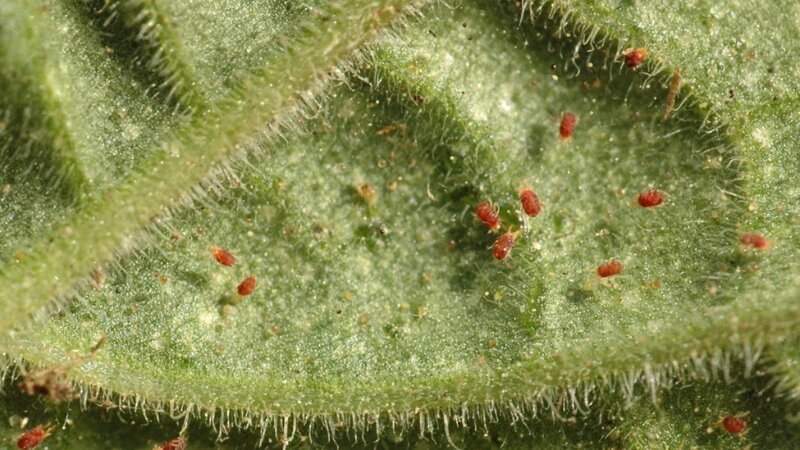
Spider Mites are microscopic pests that have a mighty impact on fruit trees in Edmonton. Barely visible to the naked eye, these pests are identifiable by their spider-like appearance, with oval bodies that range in colour from red to yellow. They weave fine silk webs on the undersides of leaves, a telltale sign of their presence.
Their MO is piercing leaf cells and sucking out their contents, which results in a stippled, yellowed, or bronzed appearance on the leaves. Over time, this damage can affect a tree's ability to photosynthesize, weakening its overall health and reducing fruit yield. Spider Mites thrive in hot, dry conditions, finding Edmonton's occasional dry spells the perfect backdrop for their population explosions.
The lifecycle of Spider Mites accelerates in warm weather, allowing multiple generations to wreak havoc within a single season. Eggs laid on the underside of leaves hatch in just a few days, with mites reaching reproductive maturity in under a week.
3. Aphids
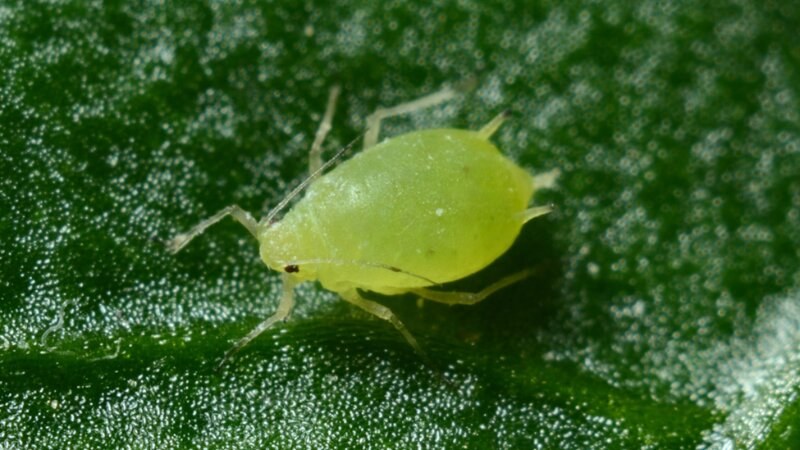
Aphids are small, sap-sucking insects that can be green, black, brown, or pink, depending on the species. These pear-shaped pests are often found in clusters on the undersides of leaves or on new growth. There, they tap into the plant's vascular system to feast on its sugary sap.
As they feed, aphids excrete a sticky residue known as honeydew, which attracts ants and can foster the growth of a black, sooty mould, further impairing photosynthesis and the tree's vitality.
The presence of aphids on fruit trees in Edmonton can lead to curled, distorted leaves, stunted growth, and compromised fruit development. These pests prefer the tender, new growth of trees, making young fruit trees particularly vulnerable. Aphids are also known vectors for various plant diseases, transmitting viruses from one plant to another as they feed.
They reproduce quickly—producing up to 80 offspring in a matter of a week—especially in the warm, moist conditions that occasionally grace Edmonton's otherwise dry climate, allowing their populations to surge rapidly. Early intervention is key to preventing these pests from establishing a stronghold and causing damage to fruit trees.
4. Apple Maggots
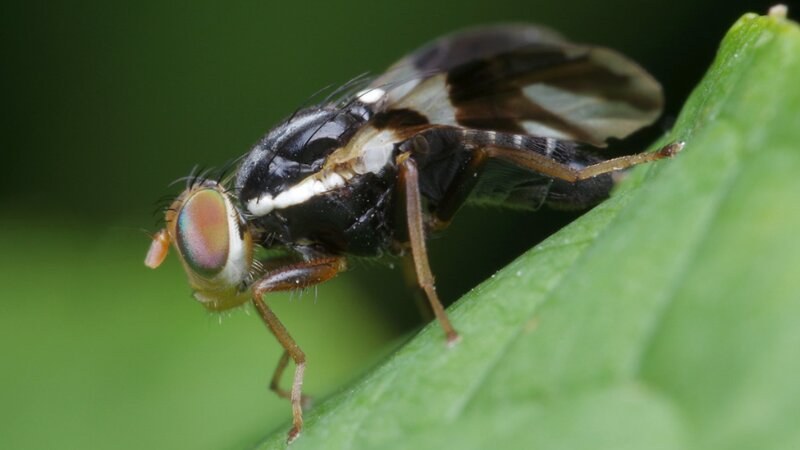
Apple Maggots are the bane of your existence if you’re an apple enthusiast. These pests begin their life cycle as eggs laid inside the apple, where the emerging larvae feed on the fruit's flesh. The visual cue of an infestation is often the misshapen or dimpled appearance of the fruit, signalling the destruction within.
Favouring the humid and warmer conditions of summer in Edmonton, Apple Maggots thrive in summers. Their spread is aided by wild, unmanaged apple trees that serve as reservoirs for the pest.
Adult Apple Maggots emerge from the soil in late spring to early summer to lay eggs in the developing fruits. The larvae feed within the apples for 3-4 weeks before exiting to pupate in the soil, continuing their cycle the following year.
This makes early detection and intervention critical to preventing the spread and minimizing the impact of these pests.
5. Caterpillars
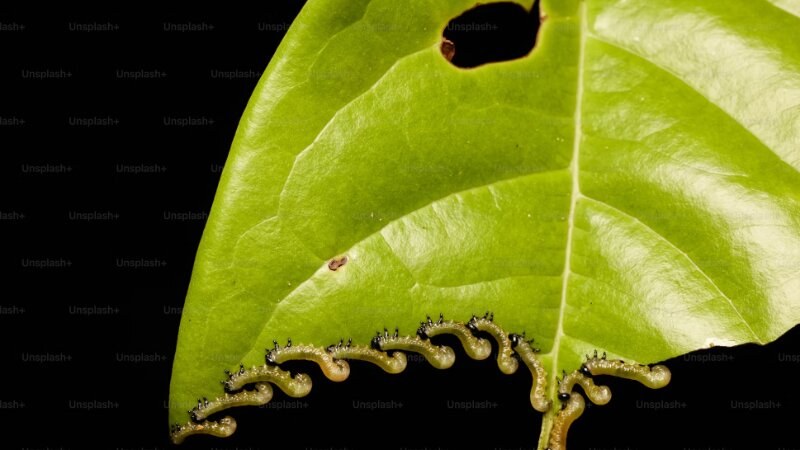
Caterpillars pose a significant threat to the foliage and health of fruit trees in Edmonton. The feeding activity of caterpillars can range from minor nibbling to complete defoliation, depending on the species.
Certain species like linden loopers, cankerworms, and the spiny elm caterpillar cause significant damage.
The life cycles of these caterpillars vary, with most overwintering as pupae and emerging in spring to lay eggs. After a feeding period of two to four weeks, they pupate, continuing the cycle.
Despite the potential for damage, the presence of caterpillars like the swallowtail butterfly larvae contributes to the biodiversity and beauty of Edmonton's gardens. They should be managed with care to avoid disrupting the delicate balance of the local ecosystem.
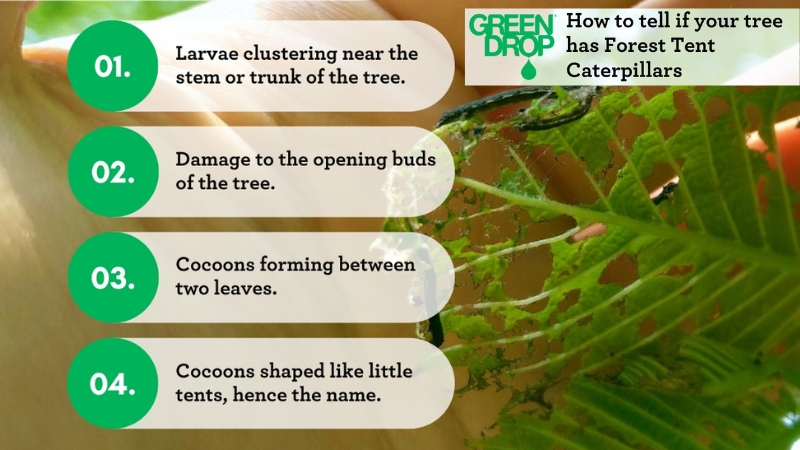
How To Keep Your Trees Free from Pests
1. Choose Resistant Varieties
Your first line of defence against pests is choosing the right fruit tree varieties. Go for species and cultivars known for their resistance to local pests.
These varieties have been bred or naturally possess qualities that make them less attractive or more resilient to insects and diseases prevalent in the area.
For example, 'Liberty,' 'Freedom,' 'Enterprise,' and 'Pristine' are resistant apple species. 'Carmine Jewel' and 'Romeo' are sour-resistant cherries. 'Harrow Delight' and 'Harrow Sweet' are pear varieties. In addition, 'Pembina' and 'Superior' are resistant plum species.
2. Regular Monitoring and Proper Identification
Vigilance is key in maintaining a pest-free garden. Inspect your trees regularly to detect potential infestations early on. Pay attention to the undersides of leaves, branches, and even the soil around the tree base for signs of pests.
Identifying signs of pests is essential for choosing the most effective treatment while minimizing damage to your tree and the environment.
Calling in certified arborists in Edmonton can help with accurate identification and advice on appropriate action.
3. Cultural Practices
Healthy trees are less likely to succumb to pest invasions. Proper watering, fertilizing, and pruning practices make trees more resilient.
- Make sure your trees receive adequate water, especially during dry spells.
- Fertilize based on the specific nutritional needs of each tree.
- Pruning not only helps shape the tree and encourage growth but also removes potentially infested or diseased branches, preventing the spread of pests.
4. Biological Controls
Using natural predators and beneficial insects is a sustainable approach to managing pest populations. Creating a welcoming environment for ladybugs, lacewings, and predatory mites can help control the number of aphids, mites, and caterpillars.
You can do that by planting diverse species that attract these beneficial insects or creating habitats that support their presence. This can enhance the ecological balance in your garden, reducing the need for too many chemical interventions.
5. Use of Pesticide
Go for organic or low-impact pesticides to minimize adverse effects on non-target species, including beneficial insects. Spot treatments rather than blanket applications help preserve the garden's ecological balance.
It’s best to hire professional pest control services to tailor the approach to your specific situation. We use completely safe, eco-friendly pesticide solutions that are targeted for specific action.
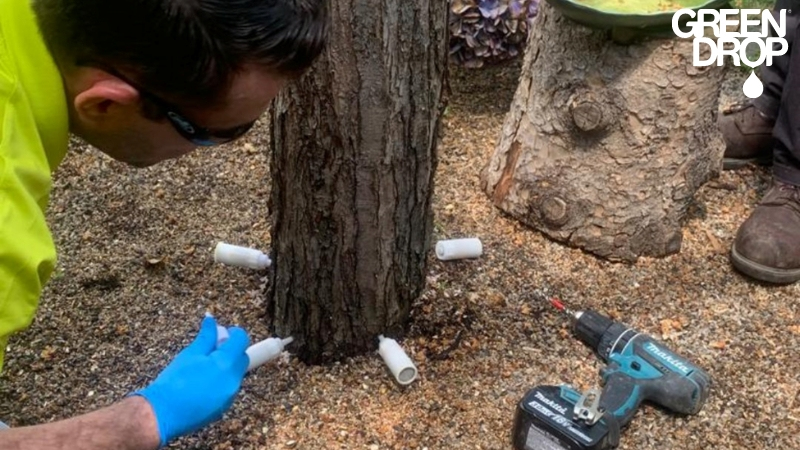
Healthier Fruit Trees with Green Drop
Cultivating a pest-resistant orchard in Edmonton's unique climate doesn't have to be a solo journey. At Green Drop, our ISA-certified arborists have the knowledge and expertise to help your fruit trees thrive.
Whether you're grappling with stubborn aphids or defending against apple maggot invasions, a consultation with our ISA-certified arborists in Edmonton can pave the way for a healthier garden.
Don't let pests take a bite out of your hard work. Together, we'll grow your dream orchard into reality.

